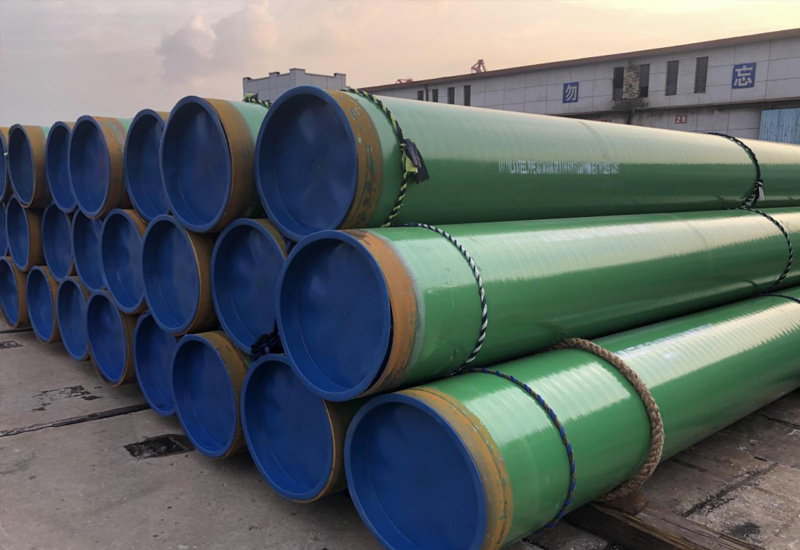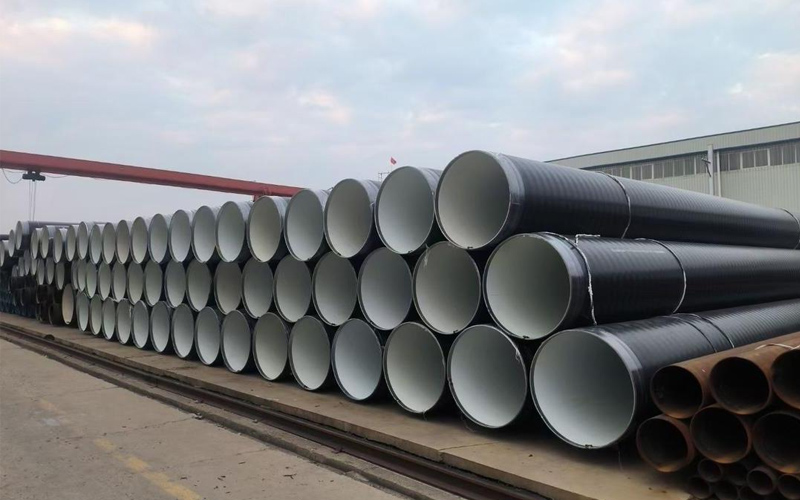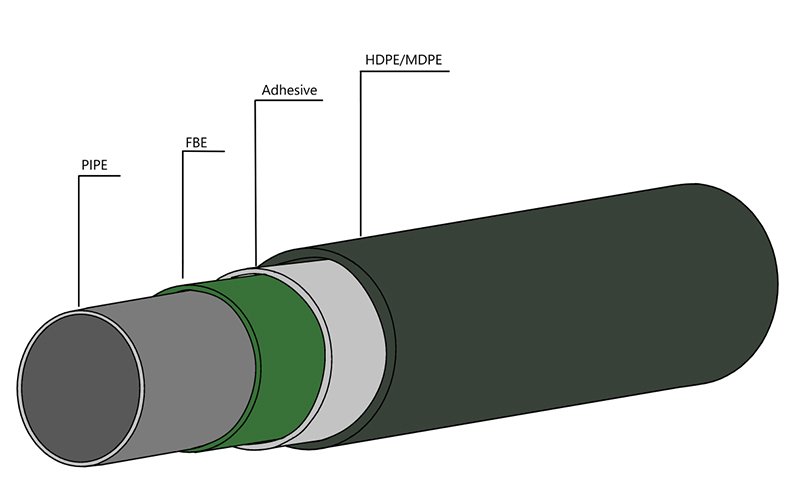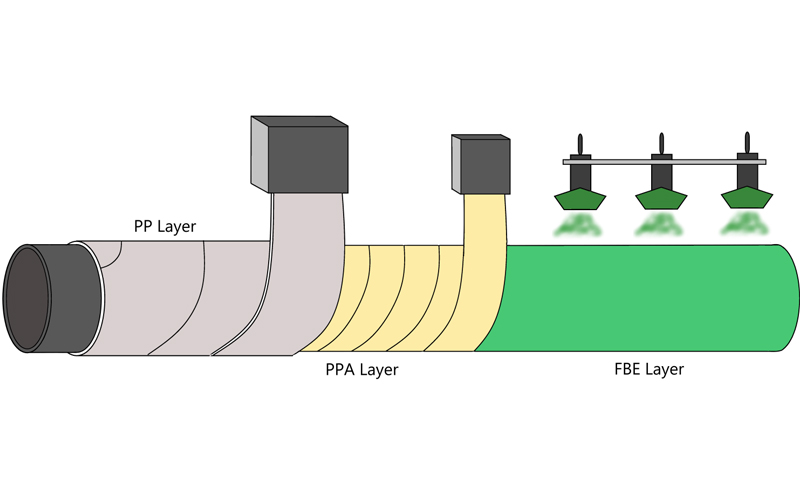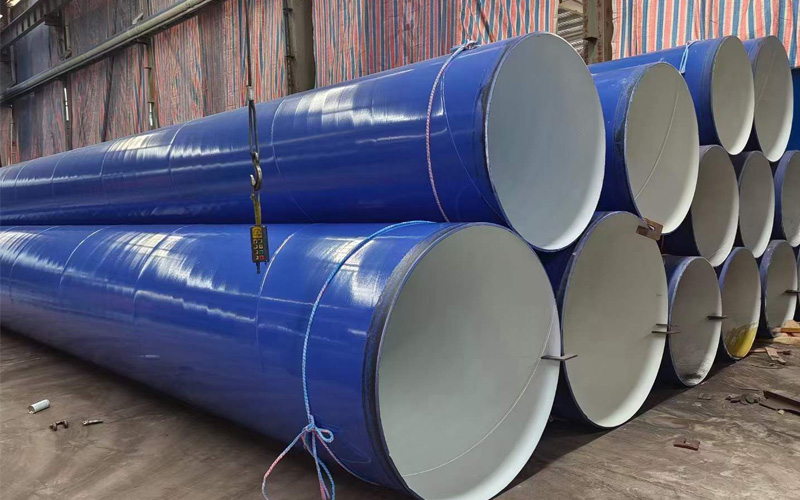API 5L vs. API 2B: A Guide to Steel Pipe Specifications
Introduction
Imagine being an EPC engineer and you are tasked with designing a fixed offshore platform. The scope of work for this project calls for two applications of large-diameter LSAW steel pipe. The first is a subsea pipeline that carries hydrocarbons from the wellhead to a onshore facility. Secondly, there’s the platform’s support structure itself — the enormous jacket and foundation piles that hold it to the seabed. Although both are based on the LSAW process, the selection of the appropriate manufacturing standard for each is extremely important. Using the wrong specification could have disastrous consequences or swell the bill enormously.
What defines a pipe’s required manufacture specification When it comes to defining the safety, durability, and overall economy of such a project, you should know that the function intended for the pipe has dictated that particular manufacturing specification. Separate, non-substitutable standards have been developed for these services by the American Petroleum Institute (API): API 5L defines the transportation line pipe and API 2B the structural pipe. In the LSAW industry, LSAW pipe buying professionals are very familiar with the confusion of these two or thinking they are the same.
In this post, you will read a typical apples-to-apples comparison between API 2B and API 5L. We will compare the two standards in detail, explore the different chemical and mechanical properties and provide a quantitative, side-by-side comparison of the two. The intent is to eliminate confusion and allow both engineers and buyers to confidently choose the right, best fit specification for their LSAW steel pipe application.
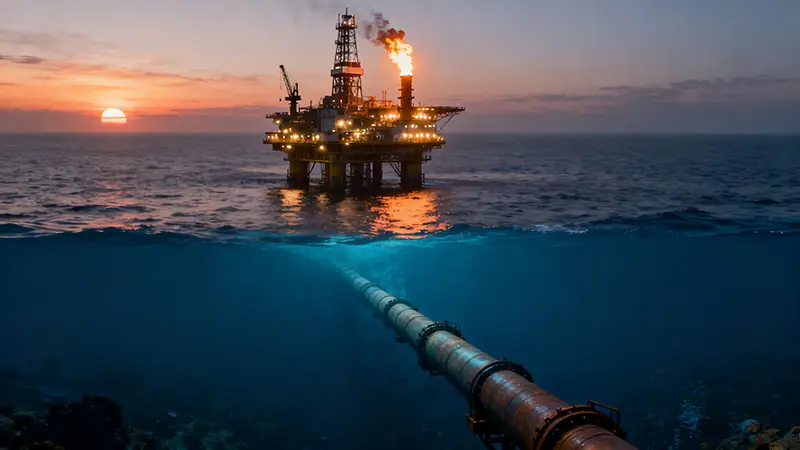
1. What is API 5L? The Global Standard for Pipeline Transportation
The API 5L is the specification that defines the standard requirements for a steel line pipe used for oil and natural gas transportation. Technical drainage is its ability to drain safely, either on the open surface or by means of a conduit, often under high pressure and over long distances. For LSAW pipes mainly used in large diameter line-pipes, this standards is popularly fulfilled.
The core principles of API 5L are centered on:
· Pressure Containment: The grades of the standard (e.g. X52, X65, X70) are determined by the minimum yield strength of the pipe, which is a measure of the pressure that it can withstand under a certain condition.
· Fracture Control: For the important applications, the HL2 (Product Specification Level 2) class requires high fracture toughness (Charpy V-notch test).This is essential to stop a minor flaw from developing into a running crack, which could burst the pipe.
· Weld Integrity: It places extremely tight controls on the quality of the weld seam, which is inspected with 100% NDT (non-destructive testing).
In essence, an API 5L LSAW pipe is engineered as a high-performance pressure vessel.
2. What is API 2B? The Standard for Structural Fabrication
The API 2B is titled “Specification for Fabricated structural steel pipe.” It’s not about transportation, but about the manufacturing of welded steel pipe for fixed offshore platforms.Due to the large diameters and thick walls needed for these constructions, the LSAW pipe manufacturing process is also a leading option for manufacturing pipe to the API 2B specification.
The core principles of API 2B are centered on:
· Structural Load Bearing: The pipe is designed to handle external loads—compression, tension, and bending—as part of a larger, complex structure. It is not primarily designed for high-pressure containment.
· Weldability for Fabrication: A key focus of API 2B is ensuring excellent weldability. A platform jacket involves thousands of complex, intersecting structural welds performed during fabrication. The standard’s chemistry requirements are optimized to ensure these welds can be made efficiently and with high integrity.
· Dimensional Tolerances for Fit-Up: The standard specifies dimensional tolerances (straightness, roundness, etc.) that are critical for the precise fit-up of complex structural joints.
In essence, an API 2B LSAW pipe is engineered as a high-quality structural steel component.
3. Quantitative Analysis: API 5L vs. API 2B Head-to-Head
The basic difference of intent results in different technical requirements, which, however, can be fulfilled by the flexible LSAW production technology. The table below gives a clear quantitative comparison of the two standards for an LSAW pipe.
| Parameter | API 5L (Typical for PSL2 Line Pipe) | API 2B (Structural Pipe) | Engineering Implication & Rationale |
| Primary Application | Transportation of fluids/gas in pipelines. | Fabrication of fixed offshore structures (jackets, piles). | The pipe’s intended function (transport vs. support) is the primary determinant of the correct specification. |
| Key Design Driver | Pressure Containment & Fracture Control. | Load Bearing & Weldability for Fabrication. | API 5L is designed to prevent bursts and ruptures. API 2B is designed to ensure structural stability and ease of construction. |
| Strength Requirements | High-yield strength is a primary feature (e.g., X52, X65, X70, corresponding to 52-70 ksi MYS). | Moderate-yield strength, typically matching common structural steels (e.g., 36-60 ksi MYS). | API 5L’s high strength allows for higher pressure or thinner walls. API 2B’s moderate strength prioritizes toughness and weldability. |
| Fracture Toughness (CVN) | Mandatory for PSL2. Critical for preventing long-running fractures (pipeline unzipping). | Mandatory. Criteria are tailored to prevent brittle fracture in structural members under load, especially in cold seawater. | Both require toughness, but for different failure modes. The risk in 5L is a high-energy rupture; in 2B, it’s a structural collapse. |
| Chemical Requirements | Strict controls on Carbon Equivalent (CEQ) to balance strength and weldability. | Primarily focused on optimizing weldability. CEQ is tightly controlled to facilitate complex field and shop welding. | API 2B’s chemistry is arguably more focused on ease of fabrication than the high-strength chemistries of API 5L X-grades. |
| Dimensional Tolerances | Extremely strict on OD, WT, and roundness to ensure consistent flow capacity and facilitate precise girth welding. | Strict on straightness and end squareness to ensure proper fit-up of complex structural nodes and joints. | Tolerances are tailored to the specific needs of pipeline construction versus structural assembly. |
4. The Critical Distinction: Transportation vs. Structure
The table summarizes an important rule of engineering: you can’t exchange one specification for another without incurring substantial risk and/or cost. This is an important differentiation when purchasing LSAW pipe. An LSAW pipe mill can make pipe to either standard, but the steel chemistry, testing regimens and end certification will be entirely different.
· Using API 2B for a High-Pressure Pipeline: That is very dangerous. An API 2B LSAW pipe is not engineered nor tested to have the high-yield strength and resistance to fracture propagation needed to safely confine high pressure gas.Its failure mode would be catastrophic.
· Using API 5L for a Structural Application: This is normally a “too-much” issue and is wasteful. The cost of a high-strength API 5L X70 LSAW pipe is far higher than that of a regular API 2B structural pipe.While it’s possible that its chemistry might not be optimised for the complex structure welding really needed, potentially making it more expensiveto fabricate, if it’s strong enough.
Conclusion
The API 5L vs API 2B standards Although both govern the production of welded steel pipe, they are two separate and unique standards that are designed for different purposes. API 5L is the transportation standard, which aims to establish a safe and dependable pressure vessel for pipelines. API 2B is the structural standard to produce a strong and weldable part for load bearing applications such as offshore platforms. Which one of these is right for your LSAW steel pipe is a fundamental engineering choice predicated entirely on what the pipe is supposed to do.The decision tree, then, is fairly clear-cut:
· Specify API 5L when: The primary function of the LSAW pipe is to transport fluids or gas under pressure within a pipeline system.
· Specify API 2B when: The primary function of the LSAW pipe is to serve as a load-bearing structural element, such as a pile, jacket leg, brace, or other component in a fixed structure.
Confusing the two is an essential buying error. One good LSAW pipe supplier like Allland Steel knows this vital difference by heart, which makes ourClients not only Provide the product that meets a certain standards, but also from the very beginning leading the client to Choose the right specification for theirapplication.This ensures project integrity from the ground up.
Get Your Custom Steel Pipe Quote Today!
Provide us with your project details (like application, specifications, quantity). Our experienced team will respond with a tailored solution and competitive quote within 24 business hours.
Related Articles
ASTM A53 vs. API 5L: A Guide to Selection and Application
Introduction:Technology differences determine success or failure, and selection needs to be “precise”
Steel Density Analysis: Core Differences between Mild and Medium Carbon Steels and Industrial Applications
3LPE coated steel pipe: a solid barrier in the field of industrial corrosion protection
3LPP coated pipe: anti-corrosion guard in high temperature and high pressure environment
FBE steel pipe: the technological armor of the steel defense line
HOT TAGS
latest posts
- FBE steel pipe: the technological armor of the steel defense line
- Precision Engineering Redefined Dubai’s Stadium Dome Construction
- An Engineer’s Guide: A Deep Dive into UOE vs. JCOE LSAW Steel Pipe Manufacturing
- Floating Pipelines: Key Views on Offshore Dynamic Risers & Marine Transportation Pipelines
- The Dance of Spiral Forming: How SSAW Steel Pipes Are Made




